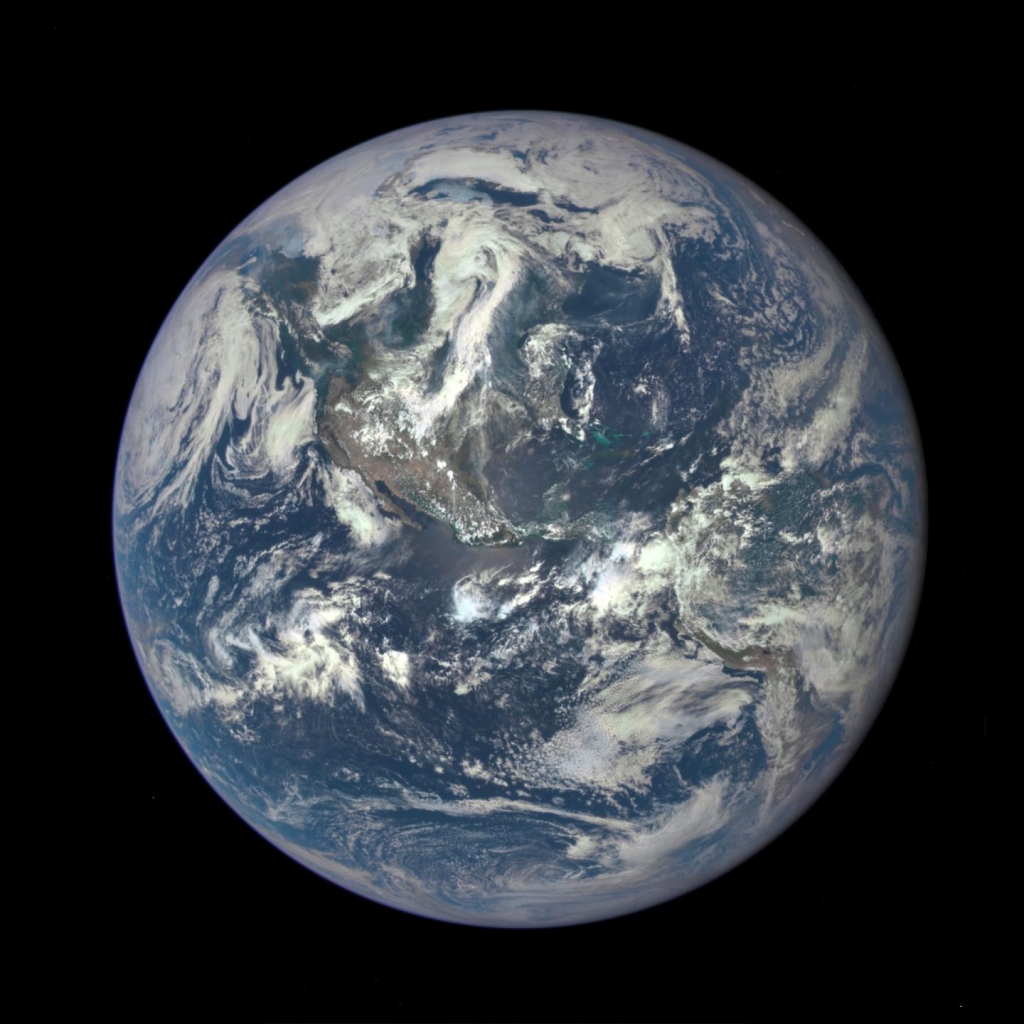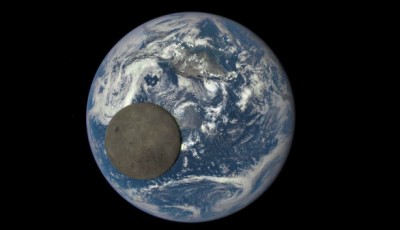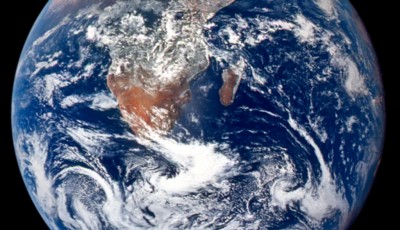Space Photography. NASA Satellite Camera Provides “EPIC” View Of Earth
Bloomberg News noted that NASA chose the distance of one million miles, referred to as “L1”, because it is a point in which the satellite will not be influenced by either the sun or the Earth. NASA grabbed the image of North and Central America using its Deep Space Climate Observatory.
NASA released today (July 20) the first image of the sunlit side of Earth taken by the Deep Space Climate Observatory (DSCOVR) spacecraft from its final science orbit, and the handsome photo has already made quite an impact. It shows the effects of sunlight scattered by air molecules, giving the image a characteristic bluish tint. The compelling photo is a combination of three different filtered images taken by the satellite’s Earth Polychromatic Imaging Camera (EPIC).
The EPIC camera, originally developed in the late 1990s for the Triana mission, takes imagery in 10 spectral channels from the ultraviolet to the near-infrared.
The satellite’s sideline in taking dazzling photos of our planet will give the denizens of Earth plenty of new images to pore over, putting our little place in the galaxy into perspective. “As a former astronaut who’s been privileged to view the Earth from orbit, I want everyone to be able to see and appreciate our planet as an integrated, interacting system”. “DSCOVR’s observations of Earth, as well as its measurements and early warnings of space-weather events caused by the sun, will help every person to monitor the ever-changing Earth, and to understand how our planet fits into its neighborhood in the solar system”. It was launched February 11, 2015.
The steady stream of Earth pictures, meanwhile, is expected to be high on the “wow” factor.
The Epic team is working on a rendering of these images that emphasises land features and removes this atmospheric effect.
DSCOVR will send back new images every day so that people around the world can see the whole planet in living color. Once the camera is fully set to begin operations daily images of our planet will be made available on a dedicated web site starting in September.










